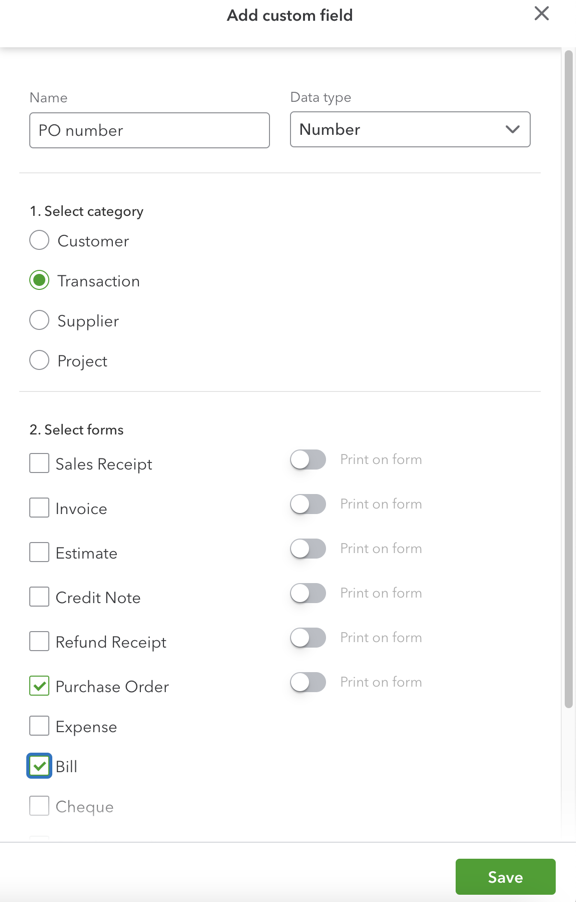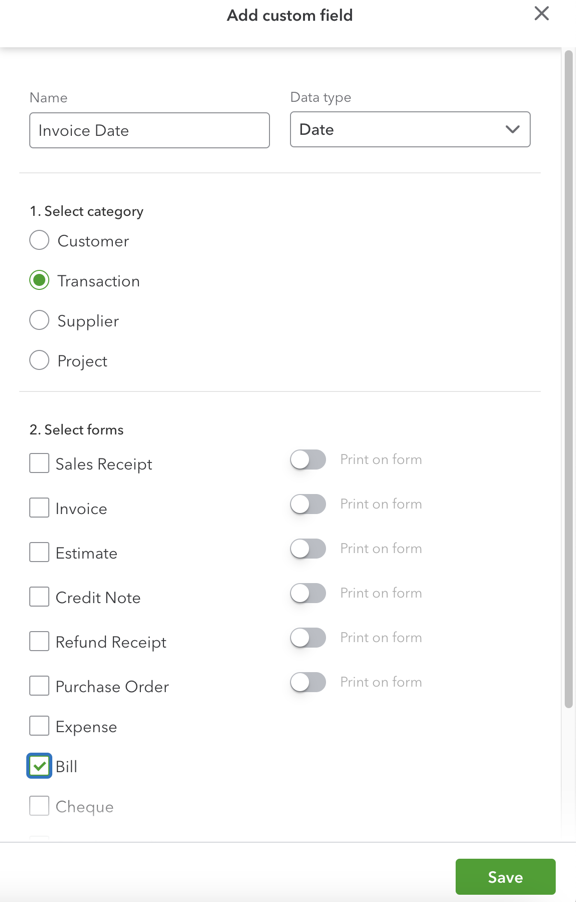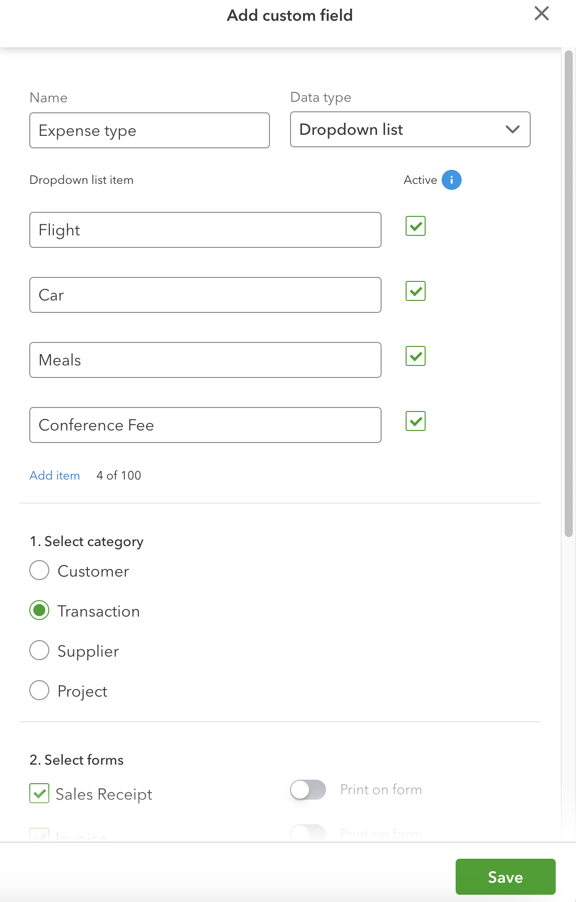Use custom fields for suppliers and expenses
by Intuit•5• Updated a day ago
Learn how to use custom fields for suppliers and expenses in QuickBooks Online Advanced.
In QuickBooks Online Advanced, you can create custom fields and use them in various ways to track the details that matter most to you. Here are some examples of how you can use custom fields to track info about your suppliers and expenses.
Create a custom field for purchase order numbers
How it helps
You can see purchase order numbers on your bills and other expenses.
When you copy a purchase order to a bill, the purchase order number appears automatically on the bill.
How to set it up
- Create a custom field and give it a name like “PO number.”
- Select the Number data type if your purchase orders have only numbers, or select the Text and number data type if they have letters as well.
- Select the PO number to appear on your bills. If you also want them to appear as a reference on your invoices and sales receipts, select these forms as well.

Create a Supplier ID field to appear on transactions
How to set it up
- Create a custom field and give it a name like “Supplier ID.”
- Select all the types of forms you want it to appear on. QuickBooks lets you show the Supplier ID field across both expense form transactions (purchase order, expense, bill, supplier credit) and sales form transactions (invoice, estimate, sales receipt).

Capture the invoice date on bills
How it helps
Currently, the Bill form in QuickBooks only includes a Bill date and a Due date. The Bill date captures the date the expense is recorded. However, in many situations, invoices are received for a prior month in which the books have already closed, and the bill(s) for the invoice are recorded at a later date.
With an Invoice Date custom field, you can capture the date the invoice was generated and use reports such as the unpaid bills report to compare the invoice date and the bill date.
How to set it up
- Create a custom field and give it a name like “Invoice Date.”
- Select the Bill form and any other expense transaction forms you want the field to appear on.

Use custom fields to categorise your expenses
How it helps
Imagine your company sends employees to attend multiple conferences a year, virtual or in-person, and has a need for tracking expenses in a detailed way. For example, your marketing manager wants to see how much is being spent per conference (travel by flight or car, hotel stays, meals, and so on), in addition to the conference fee. You can capture this info in an Expense type custom field.
Once your company starts adding data to an Expense type custom field, you can take advantage of it in your reports. For example, you can add Expense type as a column, or group by, sort, or filter by this custom field.
How to set it up
- Create a custom field and give it a name like “Expense type”
- Select the Dropdown list data type and add possible values (Flight, Car, Meals, Conference fee, and so on).
- Based on your needs, mark this field to appear on your expense forms, or choose additional forms, such as bills.
